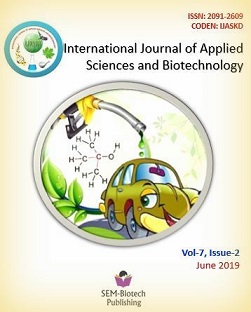Agronomic and Environmental Aspects of Conservation Agriculture on Wheat Crop Production
DOI:
https://doi.org/10.3126/ijasbt.v7i2.24637Keywords:
Conservation agriculture, No-tillage, Soil erosionAbstract
Potato (Solanum tuberosum L.) is one of the major vegetable crops of Nepal. Potato is grown all over the globe and consumed as either vegetable or staple food depending upon the crop production scenario. It is also an integral part of human diet. Potato is a high nutrient mining crop and needs higher fertilization for economic tuber production. Despite sufficient application of Nitrogen (N) and Phosphorus (P2O5), low replenishment and widespread potassium deficiency are limiting the potato production in Nepalese condition. Growth parameters such as plant height, leaf area and chlorophyll% was positively correlated with potassium application. Potassium alleviated stresses of frost and drought and reduced incidence of diseases like late blight, black scurf and hollow heart. Potassium also decreased the reducing sugar content and improved chips color and quality. Similarly, potassium application before harvest was found to increase storage life of potato tubers. Furthermore, potassium application significantly increased the yield of potato tubers and quality parameters such as Vitamin C content and specific gravity. Source of potassium and method of potassium application also affected growth, yield and quality parameters. Soil application of potassium in splits coupled with foliar spay was found to perform better. Optimum dose of potassium was recommended for economic tuber production
Int. J. Appl. Sci. Biotechnol. Vol 7(2): 161-166




